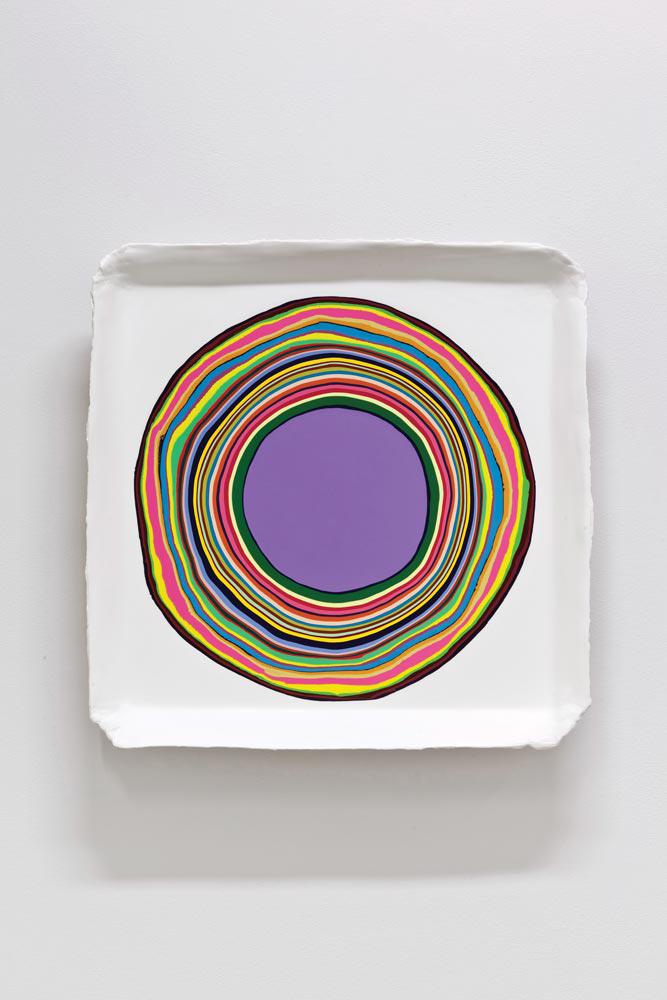The exploration of paint as a physical material with three-dimensional substance has fascinated artists for some time. From the discreet passages of impasto in premodernist works to the bombastic, comical employments of many contemporaries, the specificity of paint’s corporeal consistency has remained an alluring device. Over the last hundred years, many painters’ signature stamp has been embodied less frequently by scrawled, written characters than by an idiosyncratic material sensibility. At Jessica Bradley Art + Projects, the exhibition “Paint as Object” brought together two young painters who have added their own pages to this ongoing story. The artists, however, also reach well beyond the novelty of their paint applications to present a hybridized blend of intensely physical abstraction and equally intense but ephemeral opticality.
Sasha Pierce makes her paintings by squeezing carefully considered hues of paint out of tiny holes in sandwich bags. She manipulates her material into fine lines of thick, corrugated paint that form fantastically dense pattern-based abstractions. Intersect (2011) is a particularly strong example of her process. In it, the radiating patterns of her delicate line work are contained within a semi-centralized octagonal shape that is thrust against an interlocking grid of zigzagged forms.
Jeremy Hof, meanwhile, applies hundreds of layers of coloured latex and acrylic onto panels. The hypnotic, interlocking circles of his compositions are formed by burrowing down through these layers of paint with a router, or sanding by hand, creating bands of psychedelic colours. In both these instances, the image is revealed through excavation. Router works like layer painting yellow red circles (2011) are reminiscent of geological core samplings. Sanded paintings, such as hand sanded mutli-colour #4 (2011), are more archaeological revelations.
Such work can seem like yet another contemporary novelty, but what takes these pieces beyond the ingenuity of their unique paint applications is the complex opticality that results: the paintings completely disrupt visual perception. Like Bridget Riley’s paintings, Hof’s and Pierce’s work is hard to look at in quiet contemplation. Lines start to waver, bend and warp as the laborious physicality of obsessive materialism gives way. What’s left is the fleeting shimmer of our flawed vision.









